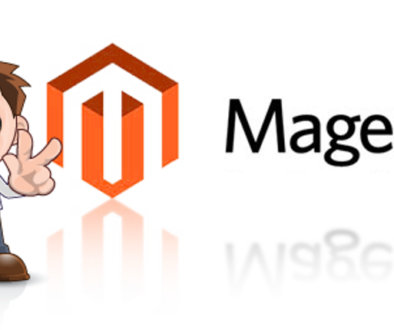Asian E-Commerce: the Last Frontier, Part II

Welcome back! This is the second article of three covering the challenges and concerns of e-tailers looking to expand operations into Asian e-commerce. Through a mix of mini case studies, relevant metrics, and solution strategies, we’ll explore the issue from the inside out. Check out Part I for an introduction to the topic. Let’s go!
Making Inroads in Asian E-Commerce
Iconic retailer Macy’s used its considerable resources to team up with FiftyOne Inc. and VIPStore, securing a delivery agreement with the former and a marketing deal with the latter to spearhead an initiative aimed at Chinese web shoppers (predicted to surpass 400M consumers by 2017, according to eMarketer Inc.). Even for a mammoth entity like Macy’s, understanding the habits and predilections of Asian online shoppers can be a struggle.
Just look at The Home Depot Inc., which announced in September imminent plans to close seven big-box stores in China due to China’s lackluster response to its stars-and-stripes DIY approach. In arena where success hinges on a sustainable e-commerce base, you’ve simply got to play to your audience better. And they will: instead of going it alone, they plan to cut the risk via a possible alliance with 360Buy Ltd., #3 on Internet Retailer’s list of the top ten Asian e-commerce retailers.
To the Amazon!
…or, more accurately, Amazon.com, who has Asian online market penetration down to a science. Their approach to Japan—notoriously tough customers ever since, well, the dawn of East-West trade—is practically textbook. Back in 2000, as one of the first U.S. retailers to enter the country, Amazon established a solid foundation by aggressively studying the buying and navigation habits among almost 193,000 Japanese customers already regularly using Amazon’s home site (again, there are benefits to extensive infrastructure and a robust market research team). From there, they built up a template for further action:
• Enter early
• Begin with a fully developed product inventory
• Utilize an intelligent and responsive customer service program
• Build site features around local shoppers’ preferences
Concurrently, they developed physical properties to facilitate large-scale logistics: a headquarters in Tokyo, regional distribution centers, and customer service centers. These efforts paid off in spades: from its amazon.com.jp property, an all-Japanese bookstore comprising 1.7M books by Japanese authors or popular translations, the company milked the region into its second-largest foreign market with $7.8B in 2012 sales, accounting for more than a quarter of Amazon’s 2012 international sales.
“Amazon likes to do its homework and make a big enough investment in all the right things to position itself to grow as the market grows,” quips Scot Wingo, ChannelAdvisor CEO. Indeed!
The Saga Continues
Of course, the battle is far from won. Amazon.com may seem to be sitting pretty with 11 Japanese distribution centers and 50M products on amazon.com.jp, but it still defers to Rakuten Inc., the market leader with 2012 estimated sales of $9.76B. Efforts continue to expand and revitalize Japanese operations. Like what? Try the Kindle Paperwhite and Fire tablets, recently released in Japan alongside a Kindle bookstore hawking Japanese digital content. There have also been strong initiatives to augment its fashion and food product offerings, as well as plans to fortify same-day delivery to more of western Japan.
“Amazon is setting the bar,” says Wingo, “[that] a lot of other U.S. and Japanese retailers will have to meet.” Yet they aren’t sitting idly by—they’re taking cues! Amazon took about 18 months to launch its first Asian e-commerce site, whereas Zazzle was able to up the ante since then via quicker data transfer between its systems and sites. According to CFO Jason Kang, Zazzle anticipated these challenges, incorporating codes and modules accommodating a variety of languages and currencies when it developed its internal e-commerce platform in 2005. All told, this cut the time to go-live for its Asian e-commerce site by half.
The Ten Fastest-Growing E-Retailers in Asia
Format: Retailer (Country) — Asia 500 Rank — 2012 Web Sales — 2011 Web Sales — Growth
NOTE: many of these figures are based on Internet Retailer estimates
- Suning Commerce Group Co. Ltd. (China) — #5 — $4.76B — $945M — 403.67%
- Lele Furniture (China) — #57 — $160.2M — $32M — 400%
- 51Buy.com (China) — #8 — $1.606B — $379.6M — 322.96%
- DHgate.com (China) — #155 — $53.6M — $13.4M — 300%
- Jiuxian.com (China) — #33 — $317M — $81M — 291.36%
- Green Box (China) — #194 — $38.8M — $12.4M — 212.9%
- VIPShop Holdings Ltd. (China) — #20 — $632M — $224.3M –181.82%
- Gome Electrical Appliances Co. Ltd. (China) — #24 — $507M — $195M — 160%
- Jumeira Network (China) — #55 — $163.5M — $64.1M — 155.13%
- Vancl.com (China) — #10 — $1.4B — $560.6M — 149.72%
All China! Very interesting. We’ll be back shortly with the thrilling conclusion!

